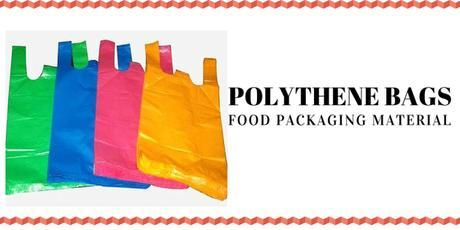
Polythene, which is the first ever commodity plastic used for packaging food, came into existence during the 1950s. From then onwards, it has been utilised extensively for packing a wide variety of food items as well as beverages. The material is not only easy to manufacture and cost-effective, but also possesses versatile properties.
There are mainly two forms of polyethenes used in the industry of food packaging:
- films made with oriented and cast processes
- containers made using blow moulding and thermoforming processes
Besides that, there are also variants coated with thin layers of aluminum that serve as an ideal material to be used in bakery packaging equipment.
Food products that generally have a very low shelf life, like vegetables and fresh fruits, can be preserved for a significant amount of time by packing with plastics. Nowadays, even fish and meat are packed with foamed polystyrene and polyethene film. Due to being highly flexible even at subzero temperatures, plastic films serve as a material for preserving frozen food items. They are even designed to have multiple layers having oxygen barrier resins, like EVOH (ethylene vinyl alcohol), that allow food items to have longer shelf life.
Some instances of beverages and food items that are packaged using polyethene have been mentioned below:
- Fresh vegetables and fruits – films bags along with heat-sealed overwraps as well as container liners
- Frozen vegetables, fruits, fish products, meat and poultry – heat-sealed overwraps and film bags
- Cereals – films bags, occasionally with outer carton board packaging
- Bakery products – film bags
- Soups, fruit drinks, fruit juices, soups, milk-based drinks and milk – polythene laminate containers and HDPE (high density polyethene) containers
- Coffee – polyethylene/aluminium terephthalate laminate bags
- Yoghurt – aluminium/polyethylene lidding
Many of these containers and films are printed for providing usage instructions, product identification and also decoration. Since polyethylene has low surface energy, it necessitates surface treatment so that the printing inks can achieve sufficient adhesion. The commonly used treatments include corona discharge, ozone and flame which increase surface energy of the plastic by imparting oxidation.
From the time of their inception, plastic packaging materials have been developed comprehensively in order to increase shelf life of foodstuffs. That is why they have achieved a kind of dominance over the years and are now used in countless applications involving edible products. In future, they are expected to develop even further into sturdy packing materials capable of withstanding various temperature and weather extremes.

